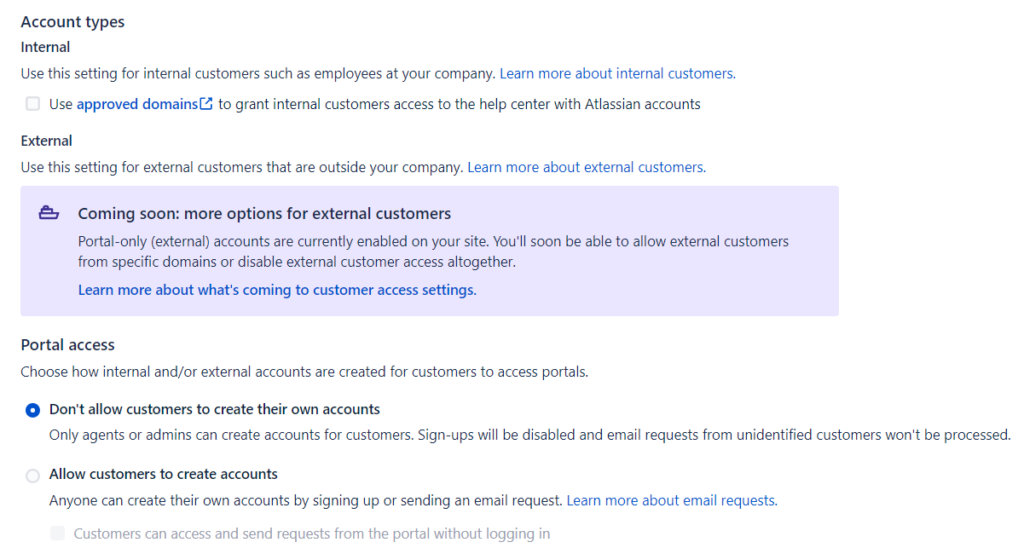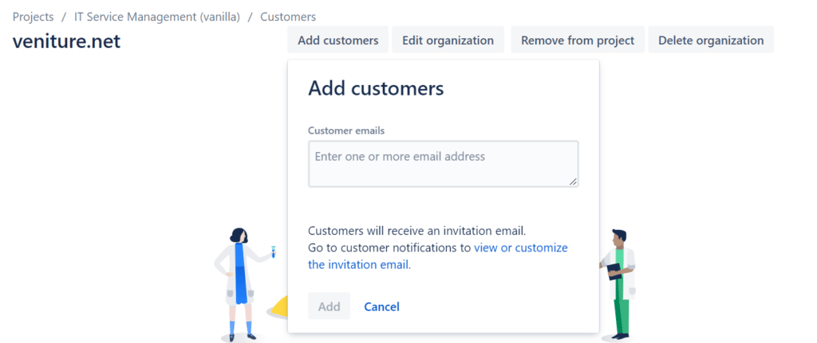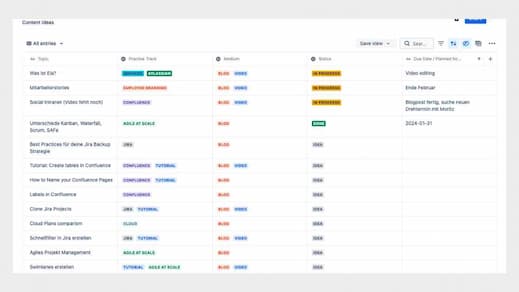3 min read
Struggling to manage your service desk customers?
 Alma Dizdaric
:
Jun 13, 2022 11:24:00 AM
Alma Dizdaric
:
Jun 13, 2022 11:24:00 AM
Atlassian is here to help you
In today's world, a lot of big companies are struggling to manage their customers. With Atlassian Jira Service Management’s features, it is easier to manage and improve your customer base. In this blog post, we will dig deep and dive into Atlassian’s very own ITSM Tool Jira Service Management’s functionalities to make managing your customers easier and more efficient. We will first take a look into how Atlassian is currently enabling you to manage your customers and then introduce new ways and improvements that would make your life all the way easier today.
Atlassian’s goal is to provide a comprehensive ITSM solution for managing customers in all business types.
This means…
- Creating a secure and seamless sign-in experience for internal service organizations.
- Avoiding the burden of double sign-in for external service organizations whose customers already have an identity.
- Allowing the synchronization of multiple user directories, and being able to effectively differentiate between internal and external customers
So how does Atlassian help me solve my problems?
Let’s first take a look into internal customers and how things are falling into place…
Atlassian lets your customers create their accounts, but for most companies and their customers, it is honestly a painful process to make people create their accounts to get service. Especially in today's world where there is a serious demand for fast and reliant service. Or directly from Atlassian: “Our customers expect the same ease of use when submitting a service request as they experience when tracking a pizza ordered online.” For that, Atlassian's Atlassian Access product lets you build out different login policies and lets you manage users and groups from your External Identity Provider and bring that information inside Jira. You can find out more about this feature here.
But what does it mean for my customers?
In this 2022 March, Atlassian already launched a new feature for allowing Jira Service Managements for approved domains. This feature allows ITSM teams to leverage Atlassian's already established Approved domains feature to create customer accounts for internal customers. Any internal customer with an approved domain can then directly log in to your service portal with ease.

So far so good, but what about my External Users?
Well, the problem with this approach was that there was no differentiation between internal customers' approved domain and the external customers' approved domain. And it is already understood that many of the big companies adopting ITSM practices today and serving customers have a lot of external customers. It is a serious pain to manage external customers especially when you see that most of these companies have 5-10 times more external customers than internal customers.
Introducing Atlassian’s ITSM Solution for External Users!
Now as we said, there are multiple pain points in external customer management for big companies. Atlassian has ways to make sure only the right people have access to a specific portal with User and Permission Management and we also have organizations but we don’t have a fast and reliant way to enable external customers to sign up and create requests. You can either enable self-sign-up or not at this point. But Atlassian came up with a solution and is on its way to bringing more powerful features as you are reading this blog post.
Coming soon to an instance near you: Approved Domains for External Customers
With this new cool feature from Atlassian, you can now add different approved domains for your Jira Service Management to enable external customers to log in and just create their requests with ease. All from within yours truly, Jira Service Management. We are very excited to share this feature with you as this feature is currently rolling out and will be available in all instances very soon.

Wait, is that all? 😞
Of course not! 🙃 Atlassian is also planning more cool features in the future for you! Why would we go through all the trouble of building expectations otherwise?
Explicitly granted Internal Customer access to users.
It is all very simple when all you need is to add customers to your customer base. But what if you have multiple service desks for multiple external groups? Today any user added to your Atlassian Organisations user base is an Internal Customer in each of your Jira Service Management Sites automatically. For large organizations, this provides limited control. A user role dedicated to granting help center access for Internal Customers will allow Administrators to choose who should have no access, customer access, or agent access to each Jira Service Management site.
Automatically add customers to organizations based on email domain
Okay, we added the users and we defined where they access. Now we have to leverage a feature that is already there, Organizations! “Organizations” is the grouping method for External AND Internal Customers. Manually adding customers to organizations is the only method available today for managing who goes into which organization. You can then define organization policies depending on users' email domains and make this automated. You can check out this feature listed by Atlassian here.

SAML/SSO options for External Customer Accounts
Do you remember we talked about how Atlassian Access? It is helping you sort through your internal user Identity Provider and get that information inside Jira, right? Currently, SAML/SSO via Atlassian Access is only available for Internal Customers Accounts. This feature seeks to extend this capability to External Customer Accounts. The goal here is to allow Identity Provider (IDP) configurations in Atlassian Access the ability to delegate groups to External Customer Accounts. Then associated those groups of customers to Jira Service Management sites. The ultimate goal here is to allow organizations to seamlessly authenticate their customers using their own user directories. You can check out this feature listed by Atlassian here.
Want to know more about ITSM Solutions? Let’s talk!
I don’t know about you but all this information is leaving me wanting more. If you feel the same way and you want to get in touch with us to further improve your Service Management Practices and Capabilities, don’t hesitate to contact us!




